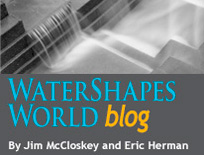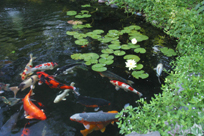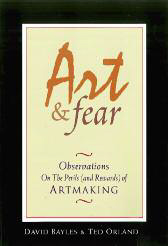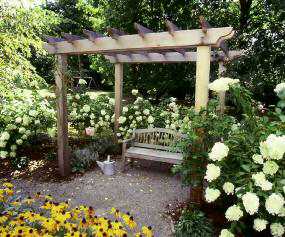Last year was the worst I’ve endured since I was a novice in the pool and spa industry. At the time, I found myself taking comfort in the fact that I wasn’t alone, that the recession was to blame for my ebbing sales and that we were all
Compiled and Written by Lenny GiteckNew IMF Head: Synchronized Swimming Champion and Whip-Wielding Dominatrix? Christine Lagarde — who was named head of the International Monetary Fund following Dominique Strauss-Kahn's hasty
I know for a fact that there are better times ahead for professionals who design and build with water. How? Well, it has nothing to do with psychic powers or a crystal ball. Rather, I know because my own experiences both as a child and an adult tell me
When I speak with clients about designing and installing ponds and populating them with fish and plants, I make a point of helping them understand what it takes to develop
The distinctive London Aquatics Centre for the 2012 Olympic Games will seat 17,500 spectators and boast two 50-meter swimming pools, one 25-meter diving pool and various training facilities. Competitions slated to take place in the center are
As the current recession has worked its way through the marketplace, I’ve found that, with increasing consistency, our projects fall neatly into two categories. On the one hand are the grand-scale projects we do mostly for wealthy people – ambitious designs that see us cover large areas with tons of rock, extensive plantings and complex hydraulic systems. While these jobs have dropped off somewhat, it’s our observation that people with money can still afford to buy what they want and that this high-end business has never really gone away. On the other are more modest designs for people who want some form of water in their lives but are working with limited budgets and, often, with compact available spaces. In fact, these systems can be minuscule, all very simple, some without any pond component at all and many ensconced in places where
I was recently rummaging through my local bookstore, searching for the next pearl to unveil in this space, when I came across a book that stopped me in my tracks just because of its title: Art & Fear: Observations on the Perils (and Rewards) of Artmaking. This slim, 122-page volume, written by David Bayles and Ted Orland (Capra Print Editions, 1993), is so provocative and insightful that I think I could fill a year’s worth of columns with my observations of how what they say ties into what we do as watershapers. Keeping it brief, however, let’s begin by assuming that what watershapers do is
As part of their work in crafting custom pools for high-end clients in the Washington, D.C., area, Bill Bennett and Walt Williams are often called on to find creative solutions to substantial design challenges. For two recent indoor projects, for example, both clients wanted to be able to transform their indoor pool areas into dry spaces suitable for large gatherings – but they wanted to do it without resorting to either automatic solid covers or moveable floors. It was quite a coincidence: Within the span of just a few weeks, we at Alpine Pool & Design (Annandale, Va.) became involved in not one, but two highly unusual projects that offered us the exact same challenge. Both were indoor swimming pools for well-to-do clients living in the vicinity of our nation's capital. Both were rectangles, with each one situated beautifully within magnificent surroundings. Finally, both enabled us to work with our good friend and long-time professional associate Kevin Ruddy of Omega Pool Structures (Toms River, N.J.) Ruddy is something of a guru when it comes to indoor pools, and as builders as well as designers we appreciate the care and detail he puts into his drawings, plans and construction documents. From experience, we know that
We water and landscape professionals literally shape the outdoor environments in which we work – cutting grades, building walls, planting trees, installing pools, ponds and fountains and preparing patios, decks, planting beds and lighting systems. In designing these outdoor-living spaces, we spend the bulk of our time





















